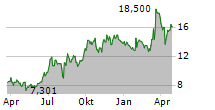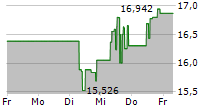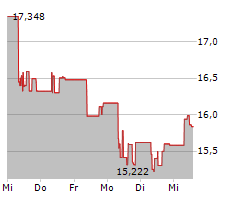
Second of Two Large Car Ferries Ordered by Shinnihonkai Ferry and Japan Railway Construction, Transport and Technology Agency
- Second ferries in Japan to utilize a buttock-flow stern hull and ducktail design, providing energy savings of 5% compared to conventional ship designs
- Handover scheduled for June 2026, planned to go into service between Otaru and Maizuru
TOKYO, Oct 9, 2025 - (JCN Newswire) - Mitsubishi Shipbuilding Co., Ltd., a part of Mitsubishi Heavy Industries (MHI) Group, held a christening and launch ceremony on October 9 for the second of two large car ferries ordered by Shinnihonkai Ferry Co., Ltd. and Japan Railway Construction, Transport and Technology Agency (JRTT). The ceremony took place at the Enoura Plant of MHI's Shimonoseki Shipyard & Machinery Works in Yamaguchi Prefecture. The new ferry will serve on a shipping route between the cities of Otaru in Hokkaido and Maizuru in Kyoto Prefecture.
At the ceremony, Shinnihonkai Ferry President Yasuo Iritani christened the new ferry "HAMANASU," the Japanese word for a species of native shrub rose. The ceremonial rope cut was performed by Nozomi Kobayashi, ship travel ambassador for the Japan Passengerboat Association. The ship's handover is scheduled for June 2026 following completion of outfitting work and sea trials. The HAMANASU is the tenth ferry built by Mitsubishi Shipbuilding for Shinnihonkai Ferry.
The HAMANASU utilizes the latest energy-saving vessel design, including being one of the second ferries in Japan to incorporate a buttock-flow stern hull(1) and a ducktail,(2) along with a KATANA BOW. Propulsion resistance is suppressed by an energy-saving roll-damping system combining an anti-rolling tank(3) and fin stabilizers,(4) providing energy savings of 5% compared to conventional ships.
The christening and launch ceremony for the first ship ordered by Shinnihonkai Ferry and JRTT, named KEYAKI, was held in April 2025, with handover scheduled for November.
Japan is currently undergoing a modal shift to sea transport to mitigate environmental impacts by reducing CO2 emissions, and to compensate for truck driver shortages arising from workstyle reforms. This shift has brought utilization of ferry transport into sharp relief. Going forward, Mitsubishi Shipbuilding will continue to contribute to the active use of sea transport and environmental protection, resolving diverse issues together with its business partners through construction of ferries that provide stable sea transport together with outstanding energy and environmental performance.
(1) A hull design that reduces water resistance by optimizing the shape of the stern.
(2) A hull form with the stern protruding like a duck's tail.
(3) An anti-rolling tank contains water that shifts laterally within a ship's beam. When a vessel rolls, the tank water moves in the direction opposite to the rolling, countering the rolling effect.
(4) Fin stabilizers are another device that reduces ship rolling. Attached to both sides of the hull, these movable fins generate lifting power in the water in the direction opposite to the rolling.
Main Specifications of the HAMANASU
Ship type: Passenger-carrying car ferry
LOA: Approx. 199m
Beam: Approx. 25.5m
Gross tonnage: Approx. 14,300t
Service speed: Approx. 28.3 knots
Passenger capacity: 286
Loading capacity: Approx. 150 trucks and 30 passenger cars
About MHI Group
Mitsubishi Heavy Industries (MHI) Group is one of the world's leading industrial groups, spanning energy, smart infrastructure, industrial machinery, aerospace and defense. MHI Group combines cutting-edge technology with deep experience to deliver innovative, integrated solutions that help to realize a carbon neutral world, improve the quality of life and ensure a safer world. For more information, please visit www.mhi.com or follow our insights and stories on spectra.mhi.com
Source: Mitsubishi Heavy Industries, Ltd.
Copyright 2025 JCN Newswire . All rights reserved.
© 2025 JCN Newswire



